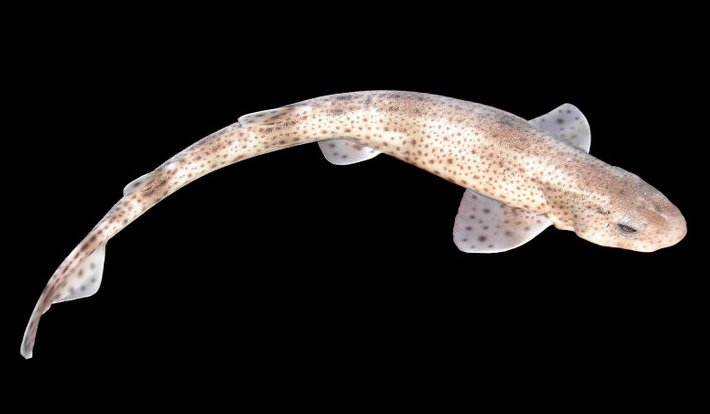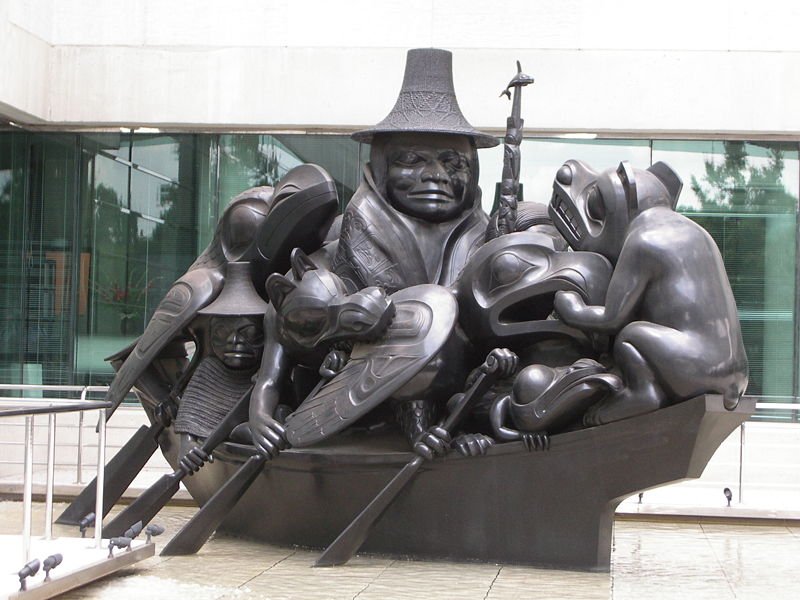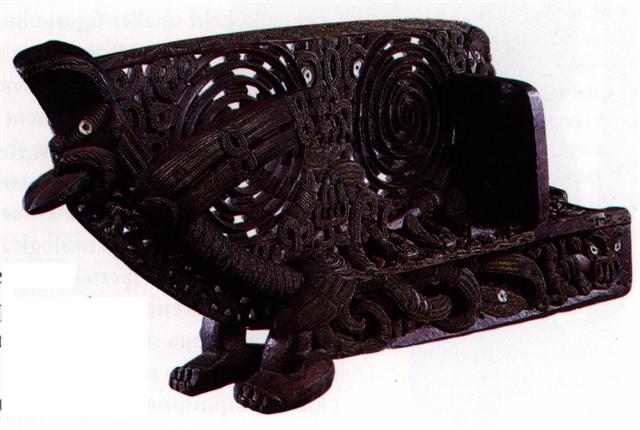|
THE D
TABLET
By looking at the dates according to the Golden Age of the Bull we can find colour agreement with the ordinal numbers of the glyphs in line Da1. And we can use the era of the Golden Bull in order to derive the heliacal star positions in my assumed era for rongorongo. *185 (the place for heliacal Antares) + *64 (precession) = *249 = November 25 (80 + 249 = 329). Then the nakshatra method can be used in order to find the current (era for rongorongo) place for the Sun: November 25 (329) - 183 = 146 (= 80 + 66). Obviously this method would be very useful to remember for all and forever.
Possibly the 'shark' (mago) in Da1-3
Mago. Spotted dogfish, small shark. Vanaga. Mogo, shark. P Pau.: mago, id. Mgv. mago, id. Mq. mano, mako, mono, moko id. T. maˇ, id. In addition to this list the word is found as mago in Samoa, Maori, Niuē, and in Viti as mego. It is only in Rapanui and the Marquesas that we encounter the variant mogo. Churchill. ... The canoe carries the following passengers: the Raven, the traditional trickster of Haida mythology, holding the steering oar; the Mouse Woman, crouched under Raven's tail; the Grizzly Bear, sitting at the bow and staring toward Raven; the Bear mother, Grizzly's human wife; their cubs, Good Bear (ears pointed forward) and Bad Bear (ears pointed back); Beaver, Raven's uncle; Dogfish Woman; the Eagle; the Frog; the Wolf, claws imbedded in Beaver's back and teeth in Eagle's wing; a small human paddler in Haida garb known as the Ancient Reluctant Conscript; and, at the sculpture's focal point, the human Shaman (or Kilstlaai in Haida), who wears the Haida cloak and woven spruce root hat and holds a tall staff carved with the Seabear, Raven and Killer whale ...
can be compared to the pair representing Aldebaran and Antares in the G text:
The evidence for my interpretation being correct is gradually accumulating. It helps to recollect:
... Most ingenious Thoth, said the god and king Thamus, one man has the ability to beget arts, but the ability to judge of their usefulness or harmfulness to their users belongs to another; and now you, who are the father of letters, have been led by your affection to ascribe to them a power the opposite of that which they really possess. For this invention will produce forgetfulness in the minds of those who learn to use it, because they will not practise their memory. Their trust in writing, produced by external characters which are no part of themselves, will discourage the use of their own memory within them. You have invented an elixir not of memory, but of reminding; and you offer your pupils the appearance of wisdom, not true wisdom, for they will read many things without instruction and will therefore seem to know many things, when they are for the most part ignorant and hard to get along with, since they are not wise, but only appear wise ... I have been so ingenious as to build up an external memory site, otherwise I - poor modern soul - would have been completely lost. ... There is no need to go into detail regarding the further creeds and customs [in addition to the belief in Kane / Tane] in which various Maori-Polynesian tribes follow the pattern of their Northwest Coast neighbors, such as nose rubbing as a salute, topknots as masculine coiffure, feathers of big birds as hair decoration, head flattening, body tattooing, finger severance, fire walking, armor for combat, the tongue as a symbol of defiance, and weapons carved as stylized heads with an outstretched tongue as the blade, the ignorance of stringed musical instruments which had their main world center between India and Indonesia, and a Maori repetition of the Northwest Coast rattles, percussion instruments, and the wooden flute or flageolet carved as a grotesque human face with sound issuing from its wideopen mouth, the system of taboo, the dread of burial in the ground and preference in both areas of placing the dead on wooden platforms raised on poles, the dried-up remains or skeletons wrapped in bark blankets and deposited in a sitting position with knees below chin in caves, trees, or (also in both areas) in part of a canoe ... Despite the ingrained orthodox methods and consequential ideas of moden myopic western civilization, which denigrated the works of Heyerdahl, he has now got his proof also by the conventional scientific methods, this fact we certainly can remember. The sea served as a quick transport lane down from the Marquesas.to Easter Island and surely equally well up to the cultural center of the Northwest Coast: ... The Raven stole the skin and form of the newborn child. Then he began to cry for solid food, but he was offered only mother's milk. That night, he passed through the town stealing an eye from each inhabitant. Back in his foster parents' house, he roasted the eyes in the coals and ate them, laughing. Then he returned to his cradle, full and warm. He had not seen the old woman watching him from the corner - the one who never slept and who never moved because she was stone from the waist down. Next morning, amid the wailing that engulfed the town, she told what she had seen. The one-eyed people of the sky dressed in their dancing clothes, paddled the child out to mid-heaven in their canoe and pitched him over the side. He turned round and round to the right as he fell from the sky back to the water ... Raven was pitched down from the sky and he turned round and round to the right (following the Sun) it was said. This detail could be a hint for (or an allusion to) a method of turning a text tablet around from the top of one side to the bottom of the other side (to the level of the water, to the time of the equinox) as a method which had to be done not just once but twice ('round and round'). Or at least an even number of times - in order to 'nullify' the preceding top order. ... I knew of two men who lived in another settlement on the Noatak river. They did not believe in the spirit of the string figures, but said they originated from two stars, agguk, which are visible only when the sun has returned after the winter night. One of these men was inside a dance-house when a flood of mist poured in ... His two companions rapidly made and unmade the figure 'Two Labrets', an action intended to drive away the spirit of the string figures, uttering the usual formula ... but the mist kept pouring in ... ... We have experience from the C tablet, where the act of following the text from the top of side a (at heliacal Polaris) to the bottom of side b was necessary in order to follow the flow of the glyphs ...
Though the corresponding pair for the D text cannot be seen to have been separated by any 'sleeping mats':
|


.jpg)

